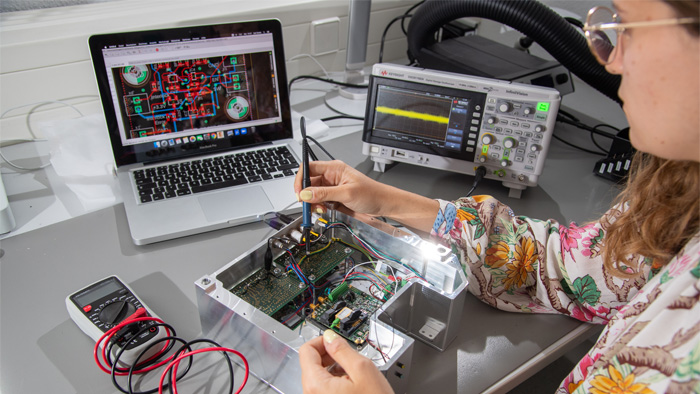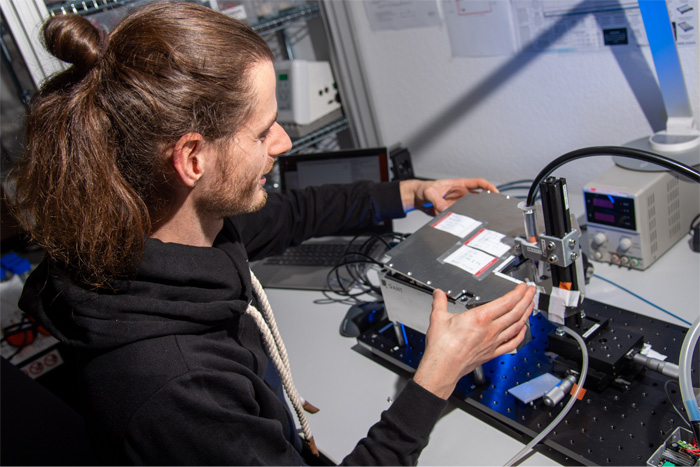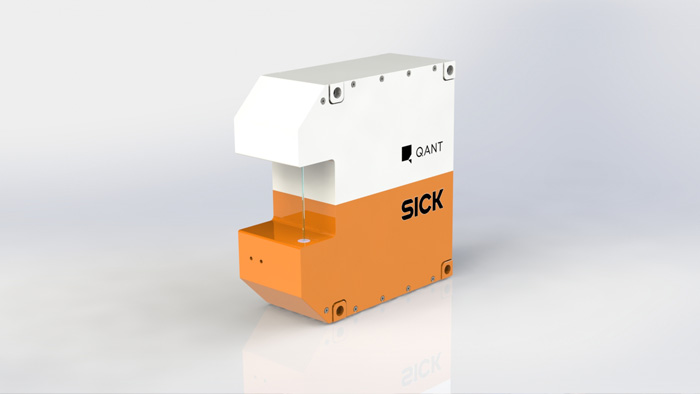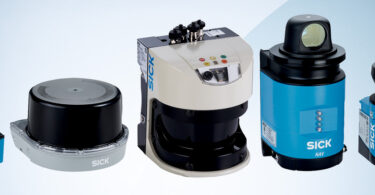An interview with SICK and TRUMPF experts about moving a step further into quantum sensor technology
In recent decades there have been many gradual improvements in sensor hardware. New results in quantum research have created completely new approaches for sensor use. Together, with the TRUMPF subsidiary Q.ANT, SICK is now developing the first quantum optical sensor for serial production. Kai Klinder, Head of Program and Engineering in Global Business Center Analyzers, and Michael Overdick, Technology Management at SICK, talked to us about quantum sensors.
What is a quantum sensor?
Michael Overdick: A sensor converts physical signals into measurement values that one can further process. So far, so familiar. Quantum sensors use effects from very small particles of material and light – which is a bit unusual. A quantum particle can adopt several different states simultaneously (superposition) or even be present in several locations at the same time – if I can express it a bit simply. One can exploit these interesting and, by the way, precisely calculable properties to obtain very accurate measurements, whereby we are back to sensors again.
And what does this mean for the new sensor that SICK and Q.ANT are currently jointly developing?
Michael Overdick: A light source based on quantum technology enables the detection of dust particles in a thousandth of a second, as well as accurate measurement of their size and direction of movement.
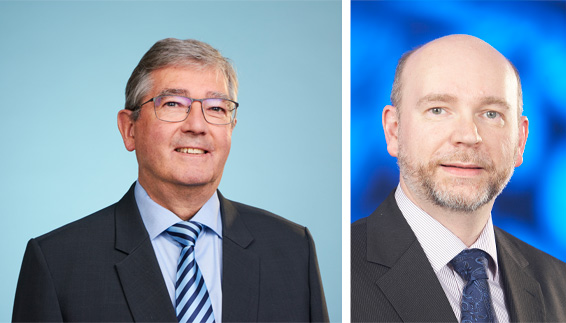
Kai Klinder (left), Head of Program and Engineering Global Business Center Analyzers, and Michael Overdick (right), Technology Management
Why is SICK getting involved with quantum technology?
Michael Overdick: SICK’s innovation management is interested in new technologies that could cover customers’ future requirements. This includes quantum technology. This is relatively ripe for use in sensors. SICK and Q.ANT are working intensively on it soon being able to leave the laboratory for practical application in the form of the QuantAlyzer quantum sensor.
What would the applications look like, in concrete terms?
Kai Klinder: Imagine a semiconductor production plant. The air is contaminated when the particle load is too high and, in the worst case, production must come to a stop. This shutdown can be prevented by using the quantum sensor because it detects the level of contamination much earlier. Another example is cement production. Grain size is decisive for the quality of the end-product. If the grain size is wrong, the concrete will not subsequently set. Up to now, therefore, one has taken regular samples and analyzed them in a laboratory. This can take several hours. If the grain size is wrong, in the worst case the product – from the time of the final measurement to when readjustment has taken place – must be discarded. A quantum sensor would enable analysis in real time from anywhere in the world, preventing the waste of resources.
Mister Overdick has already mentioned the development partnership between SICK and Q.ANT to drive forward the first quantum optical sensor for serial production – the QuantAlyzer. What synergies will result from this cooperation?
Kai Klinder: Q.ANT is a TRUMPF start-up. Q.ANT developed the quantum optical component of the sensor as an independent functional unit. SICK will integrate this assembly into the sensor system – which also contains the process integration and the communication interface to the customer application. In addition, SICK has access to the market and the customers. This is a classic strategic fit.
What challenges do you currently face in research and development?
Michael Overdick: The challenge is to make the quantum sensor even smaller, more practical and, of course, more reasonably priced – a prerequisite for entering serial production.
Kai Klinder: Systems are often still temperamental during the first phase of development. Just think about the first safety light curtains. The devices required a large mirror, were very sensitive, and were installed in an extremely large housing. We now have a small strip of LEDs that is easy to use. For our quantum sensor, the QuantAlyzer, our declared goal is to produce a robust precision sensor for use in industrial environments. Most of the necessary basics are already available.
When could the QuantAlyzer be launched on the market?
Kai Klinder: We think that the first pilot applications will take place during 2021. We are working on moving into serial production in 2022.
What markets do you want to reach?
Kai Klinder: In addition to the semiconductor and cement industries, public buildings are also interesting areas of use: For example, they could be used in subway networks to check compliance with dust limit values, or to optimize ventilation control.
Michael Overdick: So we will be using the technology to enter markets with which we are already very familiar. But because quantum technology is a key technology there is considerably more potential available that we can open up.
What potential are we talking about here?
Michael Overdick: In Germany, we only very recently realized that we were already late for some key technologies, for example artificial intelligence, e-mobility, or even quantum computers. We should make sure not to make the same mistake here. Initial estimates put the worldwide market for quantum sensors at more than USD 1.3 billion (EUR 1.1 bn.) in 2023, and forecast growth to USD 2.2 billion by 2028.1 The UK Quantum Technology Hub Sensors and Metrology even estimates that there will be a market for quantum sensors amounting to GBP 4 billion a year (about EUR 4.5 billion).2
Want to learn more about this technology? Contact a SICK representative today!


